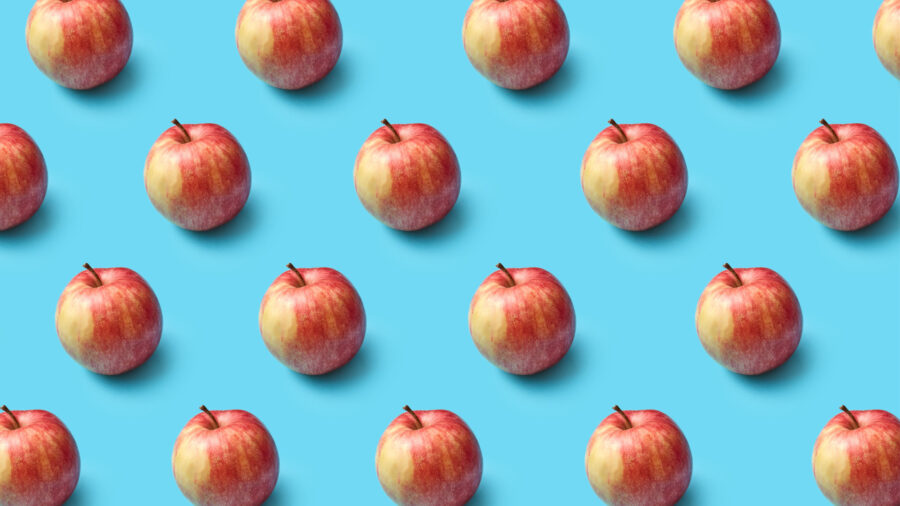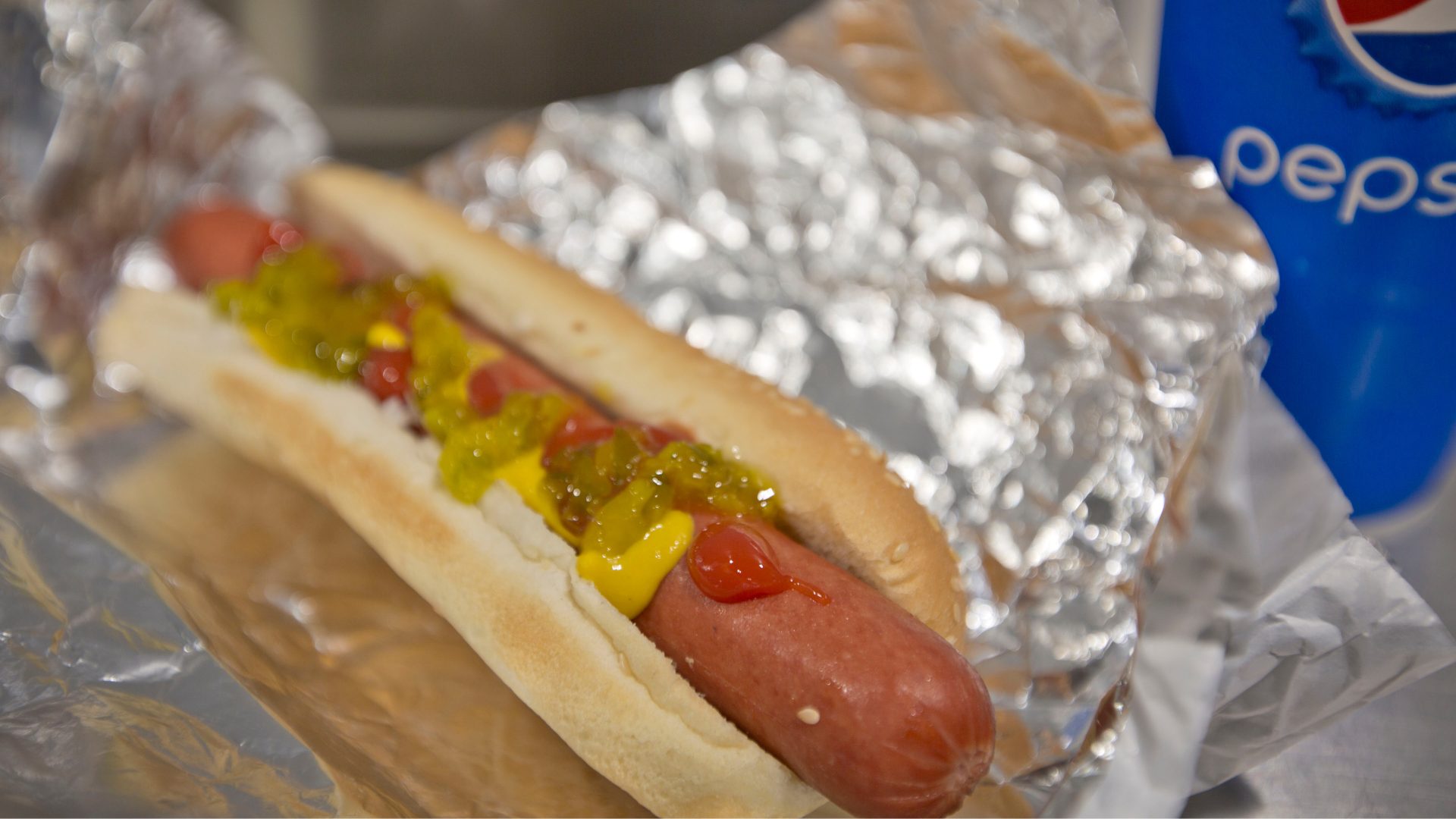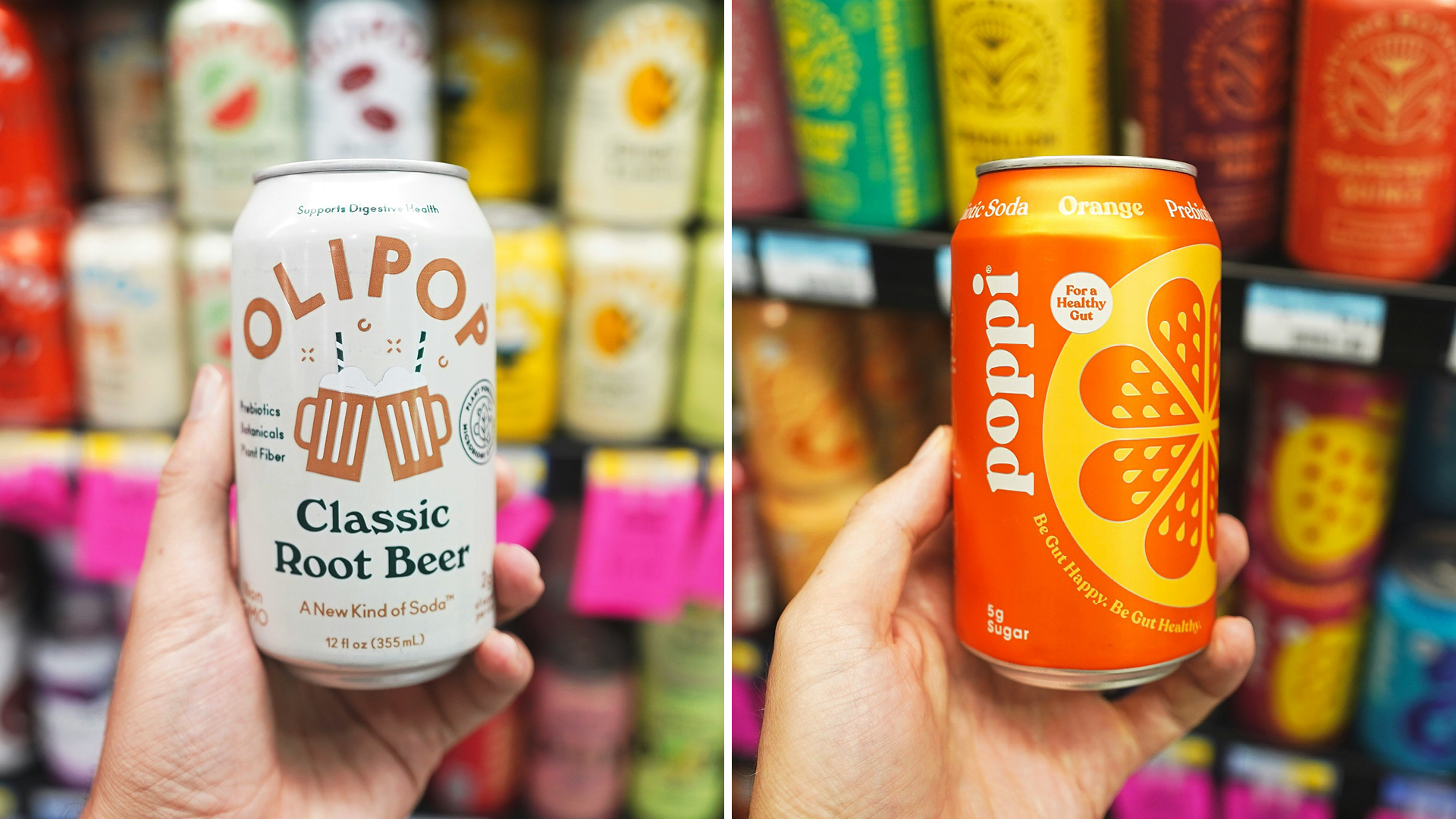A good apple is tough to beat. So ubiquitous are apples in the market and culture, however, that consumers often overlook the first fruit many ever came to know. A is for Apple and also for awesome and in 2023, the halcyon days of the Red Delicious are over.
This year, the American apple harvest could reach 250 million bushels in the 2023-24 season, a 1.5% increase from a year prior. According to USApple’s “Industry Outlook 2023,” the Gala variety is expected to retain the top spot in the rankings with more than 45 million bushels produced.
Today’s branded varieties of apple fill grocers’ carts and pic-i-nic baskets more so than ever before; today, several dozen branded apple varieties account for 15% to 20% of apple sales. In a market beset by inflation but bolstered by consumers’ desires for an indulgent eating experience, branded apples check a lot of boxes for seasonal goodness, satisfying crunch, texture, and flavor, and even qualify as a better-for-you snacking option.
“The quality [of branded apples] can be controlled a little bit better, and marketing can be controlled,” said Bill Dodd, president of the Midwest Apple Improvement Association, to The Packer. “Your expectation is that [they’re] going to be a superior apple to some of the other varieties.”
To help verify and understand this, The Food Institute went straight to the core—if you will—with a man formerly known as “Captain Crunch”—David Bedford, apple breeder of 45+ years and senior research fellow at the University of Minnesota Horticultural Center, the home of the venerable Honeycrisp.
“I came here after grad school thinking I’d get two or three years’ experience and then move on, but sometimes you stumble into the right fit in spite of yourself,” Bedford told FI recently, as mercifully cooler air brought with it the chill promise of the autumn harvest.
Almost half a century since he first set foot in the horticultural office, the man knows his apples.
The Slow Development & Marketing of Branded Apples
The University of Minnesota’s horticultural program is one of three premier apple programs in the United States. The other two are Cornell University and Washington State University, and Minnesota has produced 29 varieties of apple. The Honeycrisp was released in 1991 and represented “a massive shift forward in every regard, and especially around texture.”
Bedford said the crunchy, juicy crispiness of the Honeycrisp helped the university redefine the word crisp in the apple program, and “Once we defined that characteristic, it became clear that the consumer liked it, it really shifted buying patterns and raised the bar. We realized that Honeycrisp was the future and used it in every part of our breeding program; any breeding selections that don’t have that special texture are thrown away.”
How many apple trees and their harvest get scrapped in search of the next great variety that holds up, entices the consumer, pleases the nation’s growers, and could be selected for mass breeding and distribution?
“One in 10,000 trees,” Bedford laughed, “apple breeding moves slowly!”
Roughly 60% of apples bought each year originate from the orchards of Washington State University, where “they grow apples like [Minnesotans] grow corn and soybeans.” Washington is the nation’s top apple producer, with an estimated crop of over 160 million bushels valued at more than $2 billion.
Coast to coast, there’s more competition in the marketplace. Bedford said any new varieties must be of the highest quality, must satisfy with flavor and texture, and offer something new to the consumer. And he’s not the only one who feels this way.
“We’re on a mission to delight consumers,” said West Mathison, president and CEO of Stemilt Growers, to The Food Institute.
“When we look for new varieties, we are asking ourselves how it compares to other top apples, and looking at what unique quality or seasonality the apple has to help the category. As the consumer’s taste continues to change over time, the goal for any new variety is to improve the consumer apple eating experience so we can help drive apple consumption.”
Mathison said many new varieties emerged in the early 2000s that were crossed with the Gala. “As Honeycrisp rose in volume, the consumer gravitated towards that variety because of its crisp texture and sweet flavor…any new variety that comes in after now has to be better than [the Honeycrisp]. Predicting what the consumer is going to want is important, and we have to be thinking several years down the road because of how long it takes to get new varieties into production. There is an investment in producing managed varieties, but ultimately the success of it is determined by economics, and that comes down to the consumer adoption and experience with the apple.”
Bedford echoes that sentiment as well. “The consumer ultimately determines the success or failure,” he said, pointing out that the popularity of the Honeycrisp remains unprecedented. At no. 3 in production, “that’s a meteoric rise in the world of apples,” he noted, adding that it usually takes 40-50 years to get to that point.
The numbers hold up. According to multiple sources, the top three branded production apples in percentage in millions of 42-lb. bushels are indeed the Gala, Red Delicious, and Honeycrisp.
“The Honeycrisp has been and will continue to be No. 1 by economic value because it sells at a higher price. The income generated puts it at the top of the wholesale list. Fewer bushels yields more revenue. People love a crisp apple.”
Bedford is curious to watch the progress of a newer variety from the Washington program called Cosmic Crisp, a variety bred from the Honeycrisp.
“There will be a tsunami starting to hit the market soon,” he mused, as 15-20 million Cosmic Crisp trees have been planted in a five-year period.
“That’s totally unheard of in this business. It might take 20-30 years before most varieties would have that many trees planted. In the past, a grower may plant 1,000 trees and then plant another 1,000 as demand grows five years later; this is a new model, and the marketers are hoping there’ll be buyers for all that fruit. It’s a good apple, and macroeconomic scholars may study the model many years from now.” Bedford is confident they’ll sell, though maintaining premium pricing at that volume may be a challenge.
The Next Minnesota Apple is Nigh
Bedford said Minnesota’s orchard industry is a small player in the national apple scene but overrepresented due to the ascendance of the Honeycrisp and the program’s reputation for good genetics and stellar apples.
“We’re thrilled to still be alive and productive,” he said. “We have over 100 test selections in the pipeline at any given time, but only a few trickle to the top over the years.”
On that point, Bedford grows excited. The team at the university has identified its next branded apple and applied for a patent and a trademark name.
“The variety is known only as MN 33 at this point, but they are hoping to receive approval of its trademarked name in the near future,” he said. “That’s our next bright spot. MN 33 is an offspring of Honeycrisp, and what differentiates it is a more tropical flavor…it reminds me a little of Hawaiian Punch. The first trees were just planted in commercial orchards this year, but it will likely be another four to five years before the fruit will be available to consumers.
“Apple breeding is a slow business. You can see how 20 years gets eaten up pretty quickly!”












